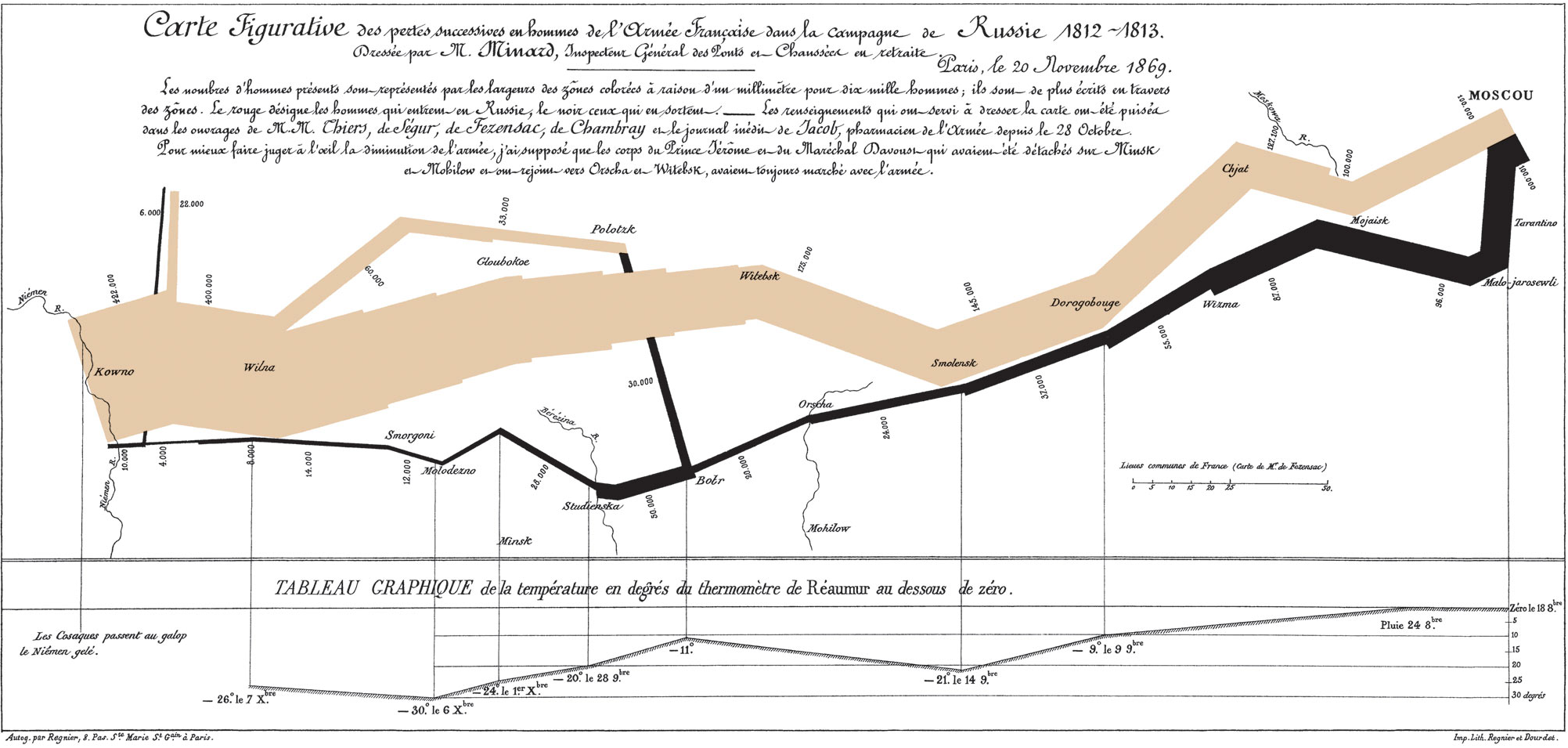Supply and Logistics Data Visualization Military Campaigns Napoleons Invasion of Russia
Topic: philosophy
Summary: A review of Menard's famous data visualization of Napoleon's failed invasion of Russia.
Supply and Logistics, Data Visualization, Military Campaigns

A Venn diagram of the people who are interested in these 3 topics would probably encompass a very small quantity of people, but I happen to be one of them.
What we have here is Minard’s depiction of Napoleon’s 1812 invasion of Russia. It’s known as one of the best data visualizations of all time.
The light brown line represents the size of Napoleon’s forces as they marched into Russia and the black line represents the retreat.
The thickness of those lines represents the size of forces (400k to start and around 10k upon their return).
The thin vertical lines represent river crossings during the retreat and the line chart at the bottom shows the temperature during the retreat. Note the distinct drop off of forces at each river crossing.
The narrative that Napoleon put forth upon his return was more or less that the Russian winter is what defeated him. But the data tells a different story.
It’s apparent that well before his forces reached Moscow, Napoleon had suffered huge losses. The truth is, most of the losses weren’t inflicted via combat. A combination of Supply and Logistic challenges and disease played a much bigger role.
Supply Chain: Napoleon had established several supply magazines in the west that were meant to resupply the front. But the robust wagons meant to transport the bulk of the supplies couldn’t cope with the poor quality Russian climate, roads and terrain.
The Russian’s were aware that it would be difficult to maintain adequate supplies and thus the French army would likely resort to foraging and pillaging en route. The Russian’s implemented scorched-earth tactics during their strategic retreat. The Russians would leave nothing of use for the French. They would burn crops, kill livestock and dump carrion into the wells before retreating from a town. No fodder for the horses, no food, water or shelter for the troops.
Disease: Lack of fresh water meant minimal ability to wash. Typhus is a disease transmitted by body louse. Unlike many such diseases, it is not the flea bite that transmits the disease, it’s the excrement. Prevention measures are to bathe and change clothes regularly and avoid close contact with others. At the time, they were unaware of preventative measures, and unable to implement them anyways. Typhus spread rapidly among the troops. Exposure to contaminated drinking water also caused large outbreaks of dysentery.
Back to Supply Chain: Supply Chain issues were compounded as hunger and thirst set in. Prioritizing provisions for humans meant that many horses were weakened and eventually succumbed to overwork and malnutrition. Since this was the transport method of supplies, it further diminished the ability to resupply forces.
Winter and the Retreat: The data shows that when they reached Moscow in October, Napoleon had already lost 75% of his forces - mostly due to the reasons stated above. Napoleon knew that his supply infrastructure was ineffective at such distances. He kept doubling down on the possibility of catching the Russians and forcing a decisive victory - which was not to be. Napoleon attempted to take a more southern route for his retreat in the hopes that a southern route would yield more supplies for his forces, but the Russian’s understood this desire and forced him to retreat along the same barren route from which he invaded.


